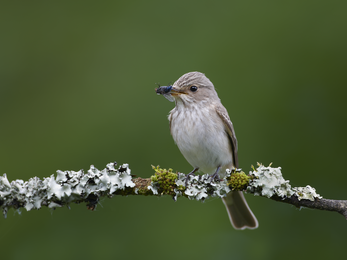Many sites such as Philips Park Local Nature Reserve in Bury have a significant number of invasive rhododendron shrubs growing throughout their woodlands and other habitats. Over the years, areas of rhododendron at Philips Park have been cut back but the species continues to thrive and dominate certain areas of the site. Working with various stakeholders, we have been assessing where we need to control rhododendron – and even try to eradicate them for the benefit of wildlife at this fantastic site.
Why control rhododendron in our woodlands?
Phillips Park (c) Iain Mackennon
What is rhododendron and why is it a problem?
Rhododendron is a broadleaf evergreen species, with dark green glossy leaves that are obligate to elliptical in shape. The leaves grow in whorls around stems which grow incredibly dense – often interlocking and bending amongst each other; very different to most other shrub and tree species.
Rhododendron have beautiful flowers which can range in colour from light pink to purple. It was for these beautiful flowers that rhododendron was brought into the UK in the 18th century to add ornamental value to gardens and parks. In other areas, it was also used as game cover in many woodlands for pheasant shooting.
Rhododendron is an incredible species, growing up to 8m in height as well as having the ability to produce thick interlocking stems and canopy which can become impenetrable to us. One of the shrubs' greatest adaptations is that each flower head can produce between three and seven thousand seeds – meaning a large bush could produce several million seeds per year; all of which will be spread by wind dispersal and through water courses. As well as spreading by seed, rhododendron can send out side branches which can root in the soil to help the shrub colonise more areas.
Although Philips Park has some fantastic woodland areas – with gnarled oaks and other tree species offering fantastic refuge to countless wildlife species; it does not have the diversity and abundance of wildlife species that a woodland of semi-ancient natural character should have.
One of my biggest passions is birds. Since starting this new role at Philips Park I have had the opportunity to observe and engage with a wide range of species including great spotted woodpecker, tawny owl and tree creeper. However, the numbers of tree creepers and woodpeckers seem incredibly low for a site with such extensive semi-ancient natural woodland.
This is likely to be the same for a wide range of other wildlife groups such as butterflies, moths, mammals, and others. The dream would be for Spotted Flycatcher to colonise the site, an inconspicuous but charming bird with amazing hunting technique.
Whilst there is a wide range of factors that are contributing to Philips Park not having the diversity and abundance of wildlife species that we would expect, the dominance of invasive species across the site will be contributing to this reduction in life.
As a non-native invasive species, one of the biggest impacts of rhododendron at Philips Park – and other woodlands; is that it often outcompetes native trees and shrubs in woodland which over time leads to complete dominance of the understorey layer. One of the obvious impacts of this at Philips Park is a reduction in the number of ground flora species in areas where rhododendron is abundant. This doesn’t just impact our classic spring species like bluebell, celandine, wood anemone, and cowslip but will also impact all our insect species that use these for nectar.
Whilst the tree canopy at Philips Park is diverse and appears to be healthy, in reality, rhododendron can and does limit the lifespan of many existing tree species as a result of impacts upon soil moisture and quality – both of which can increase stress within existing tree stock. Where rhododendron is very dense it makes it almost impossible for native tree species to generate new seedlings which over time will restrict or prevent woodland regeneration leading to a reduction in the diversity of structure at Philips Park. It is a range of ages and species within our woodland that creates diversity which is the building block for more wildlife to survive and thrive at Philips Park.
On the flipside, rhododendron does have a huge amount of flowers which add colour to Philips Park and provide nectar to pollinators. However, despite relying on insect pollination, rhododendron nectar contains high levels of diterpenes which are toxic to many different animals. These toxic substances are used by many plants to deter animals that may graze on their leaves. Unfortunately, many of our pollinators including bumblebees and honeybees can be impacted by these toxins. As our pollinators have a range of nectar sources the impact of toxins is likely to be balanced out but if rhododendron continues to thrive and spread at Philips Park it will impact the balance which is likely to impact upon abundance and diversity of our pollinator insects.
buff-tailed bumblebee (c) Vaughn Matthews
If you are interested in learning more or joining some of our practical workshops then please get in touch: randrews@lancswt.org.uk




